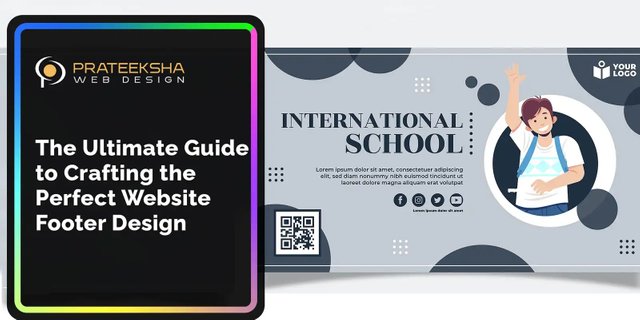
What is a Website Footer?
A website footer is a fundamental component of web design, typically found at the bottom of web pages. It's like the foundation of a building, often overlooked but essential for balance and structure. In the digital world, footers serve as a crucial navigational aid, providing users with a plethora of information and links, accessible without the need to scroll back to the top of the page.
Key Characteristics and Functions of a Website Footer:
Navigation Hub: A footer acts as a secondary navigation area, hosting links to key pages like 'About Us', 'Contact', 'Privacy Policy', and 'Sitemap'. This aids in improving user experience by allowing easy access to important sections of the site.
Contact Information: It's a common practice to include contact details in the footer – phone numbers, email addresses, or a physical address. This ensures that contact information is readily available, regardless of where the user is on the site.
Legal Information: Footers are often used to display legal information, such as copyright notices, terms of service, and privacy policies. This is crucial for compliance with legal standards and for building trust with users.
Social Media Links: Integrating social media icons and links in the footer encourages users to engage with the brand on various platforms, thereby extending the relationship beyond the website.
Branding: A footer can reinforce brand identity through the use of logos, taglines, or a specific color scheme, maintaining consistency across the website.
Design Elements: Although footers are located at the bottom, they are integral to the overall design and aesthetic of a website. A well-designed footer can contribute to the site's visual appeal and user experience.
Call-to-Action: Some footers include calls-to-action, such as newsletter sign-up forms or links to recent blog posts, to engage users and encourage them to interact more with the site.
SEO Advantage: Strategically placed keywords and links in the footer can contribute to a website’s search engine optimization, helping in better ranking and visibility.
Read More
https://prateeksha.com/blog/the-ultimate-guide-to-crafting-the-perfect-website-footer-design/